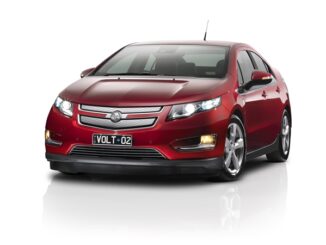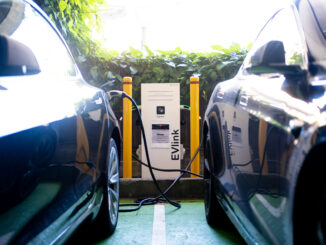 Porsche Taycan sets new standards for four-door, all-electric sports cars on the Nürburgring-Nordschleife. Consequently, test driver Lars Kern conquered the legendary track, famously known as the Green Hell, in seven minutes and 42 seconds.
Porsche Taycan sets new standards for four-door, all-electric sports cars on the Nürburgring-Nordschleife. Consequently, test driver Lars Kern conquered the legendary track, famously known as the Green Hell, in seven minutes and 42 seconds.
The lap time was set over the 20.6-kilometre course that’s usually used for record attempts. During the attempt, Lars Kern drove a pre-series Taycan.
“The Taycan is also suitable for race tracks and it convincingly proved that here on the world’s most challenging circuit,” Kern explains. “Again and again, I am impressed at how stable the all-electric sports car handles in high-speed sections, such as Kesselchen, and how neutrally it accelerates from tight sections, such as Adenauer Forst.”
“The Taycan mastered its Triple Endurance Run superbly. First, our electric sports car demonstrated the reproducibility of its performance as part of a strenuous test involving 26 successive acceleration runs from zero to 200 km/h. Then it completed 3,425 kilometres within 24 hours in Nardò without any issues and now the record at the Nürburgring-Nordschleife,” remarks Stefan Weckbach, Vice President Product Line Taycan. “Numerous factors contribute to this performance and the efficiency of the powertrain, also at high speeds. These include the chassis systems that react within a fraction of a second as well as the outstanding aerodynamics.”
Development engineers started driving a Taycan around the Nürburgring-Nordschleife at an early development stage in a simulator, so that they could test and evaluate its performance on a virtual race track. In this process, one of the main goals was determining electric energy with thermal management, which form an important contribution to achieving the lap time.
Previously: 24-hour endurance run and a series of accelerations
The Taycan can do both, race track and endurance run: in 24 hours Porsche covered a distance of exactly 3,425 kilometres in a prototype as part of a test at the Nardò (Italy) high-speed track. This roughly equates to the distance from Nardò to Trondheim in Norway. In sizzling temperatures at the southern Italian test track, the speed was between 195 and 215 km/h. In peak outside temperatures of 42 degrees Celsius and a track temperature of up to 54 degrees Celsius, the Taycan prototype proved its long-distance qualities even before the series production launch. The test was completed without interruptions, as the prototype merely had to pause for quick charging stops and driver changes.
And at the end of July a pre-series vehicle accelerated from zero to 200 km/h no less than 26 successive times down an airport runway. The average acceleration figure from the timed runs was under ten seconds. The difference between the fastest and slowest acceleration runs was 0.8 seconds.
The new Taycan: the first all-electric sports car from Porsche
A whole range of technical features guarantees an impressive race track performance of the Taycan:
- The Taycan has two exceptionally efficient electric motors on the front and rear axles and therefore features all-wheel drive. The all-wheel drive and traction control systems operate significantly faster than conventional systems. For example, if one wheel has more slip, the electric motors regulate it within a fraction of a second.
- The integrated Porsche 4D-Chassis Control analyses and synchronises all chassis systems in real time. The innovative chassis systems include adaptive air suspension with three-chamber technology including electronic damper control PASM (Porsche Active Suspension Management), as well as the Porsche Dynamic Chassis Control Sport (PDCC Sport) electromechanical roll stabilisation system, including Porsche Torque Vectoring Plus (PTV Plus). The record-breaking car also featured rear-axle steering and 21-inch tyres.
- The Taycan is the first production vehicle with a system voltage of 800 volts rather than the normal 400 volts for electric cars. The benefits include high levels of consistent performance.
- The driving modes profile of the new Taycan offers special settings to make full use of the all-electric drive’s properties. In “Sport Plus” mode, driver requests are implemented in an extremely dynamic way. As a result, the battery’s cooling and heating strategy has been designed for maximum performance. At the same time, the cooling air flaps are opened, the rear spoiler is extended early on for minimal lift, while the chassis set-up becomes optimised for maximum race track performance, and the suspension permanently set in the lowest position.



